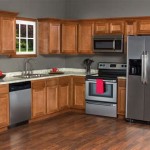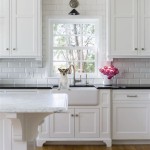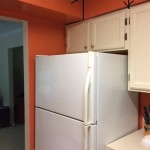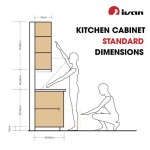Kitchen Base Cabinet Design: Essential Aspects
In any well-planned kitchen, base cabinets serve as the foundation for efficiency, functionality, and style. Understanding and considering the various essential aspects of kitchen base cabinet design before embarking on your project is the key to establishing a kitchen that not only meets your needs but also enhances your culinary experience. This article delves into the crucial elements of base cabinet design, providing insights into each aspect to empower you in creating a space that suits your unique requirements.1. Functionality and Usage
The primary purpose of base cabinets is to provide storage and organization for your kitchen essentials. Determining how you use your kitchen is the first step in designing base cabinets that meet your needs. Consider your cooking habits, storage requirements, and workflow. What types of items do you need to store? Do you require specialized storage solutions, such as pull-out shelves or lazy Susans? By carefully assessing your usage patterns, you can design base cabinets that maximize efficiency and minimize clutter.
2. Cabinet Construction and Materials
The durability and longevity of your base cabinets depend heavily on the quality of construction and materials used. Cabinet boxes can be made from various materials, including plywood, particleboard, and MDF. Plywood is considered the most durable option due to its strength and resistance to warping. The choice of material for cabinet doors and drawer fronts offers both aesthetic and functional considerations. Solid wood is a popular choice for its natural beauty and durability, while laminate and thermofoil offer a wide range of styles and finishes with enhanced resistance to moisture and scratches.
3. Cabinet Dimensions and Layout
The size and layout of your base cabinets play a vital role in the overall functionality of your kitchen. Standard base cabinet heights range from 34 to 36 inches, while depths typically vary between 24 and 30 inches. The width of base cabinets can vary based on the available space and the desired storage capacity. When planning the layout, consider the placement of appliances, the flow of traffic, and the ergonomics of your workspace. Proper planning ensures a seamless and comfortable cooking experience.
4. Door and Drawer Styles
The style of your base cabinet doors and drawers significantly impacts the overall aesthetic of your kitchen. Shaker, slab, and recessed-panel doors are classic choices that offer timeless elegance and versatility. Modern styles, such as frameless and high-gloss doors, provide a contemporary and sleek look. Drawer fronts can also vary in style, with options ranging from simple shaker panels to decorative moldings and hardware. Choosing a door and drawer style that complements your kitchen decor and personal preferences will create a cohesive and visually appealing space.
5. Hardware and Accessories
Hardware and accessories play a crucial role in enhancing the functionality and convenience of your base cabinets. Cabinet knobs and pulls come in a variety of materials, finishes, and styles to match your personal taste. Choosing the right hardware can significantly improve the ease of opening and closing cabinets and drawers. Other accessories, such as roll-out trays, drawer dividers, and spice racks, maximize storage space and keep your belongings organized and within easy reach.
6. Countertop Compatibility
The countertop you choose for your kitchen should complement the style and functionality of your base cabinets. The height and depth of your base cabinets must be compatible with the countertop to ensure proper alignment and support. Consider the thickness, edge profile, and material of the countertop to create a cohesive and aesthetically pleasing work surface. Additionally, the countertop should be durable and resistant to heat, moisture, and scratches to withstand the demands of everyday use.
Conclusion
Designing kitchen base cabinets requires careful consideration of multiple essential aspects to ensure a functional, stylish, and durable foundation for your kitchen. By understanding the elements discussed above, you can make informed decisions that meet your specific needs and preferences. Whether you are renovating an existing kitchen or designing a new one, considering these essential aspects of kitchen base cabinet design will ultimately lead to a kitchen space that is both practical and aesthetically pleasing.
15 Stunning Kitchen Cabinet Designs In Singapore With 5 Essential Tips

Kitchen Cabinet Design Tutorials

Kitchen Sink Cabinet Organization Ideas And Solutions Modern Glam

A Quick Guide To The Basic Types Of Kitchen Cabinets Urban Life

Kitchen Base Cabinets What You Should Never In Lower

Kitchen With Only Base Cabinets Design Ideas

Three Drawer Base Cabinet Aristokraft Cabinetry Kitchen Remodel New Cabinets

Base Cabinet Size Chart Builders Surplus Modular Kitchen Cabinets Sizes

30in Base Cabinet Carcass Frameless Rogue Engineer

Standard Kitchen Cabinet Dimensions For Your Homee Design Cafe
Related Posts








